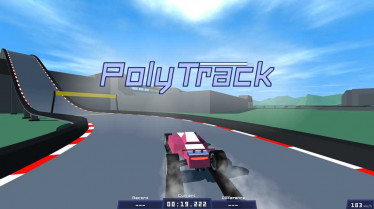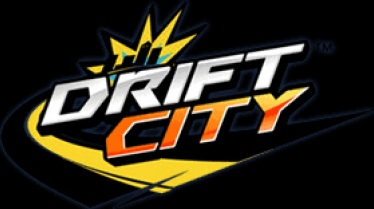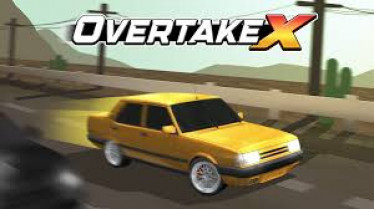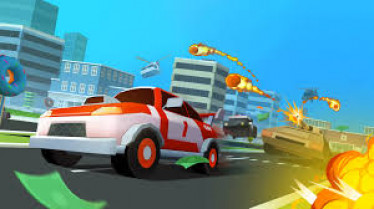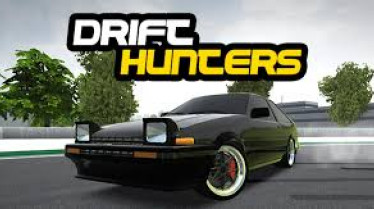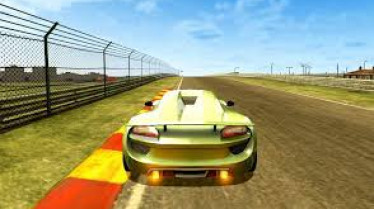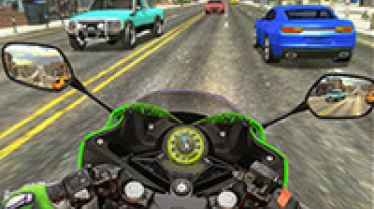Traffic Control is an engaging traffic simulation game that puts you in the shoes of a traffic cop tasked with managing the flow of vehicles on a busy road or intersection. Your primary objective is to prevent traffic accidents by controlling the movement of cars, and the game challenges your reflexes and decision-making skills as the difficulty ramps up quickly. Here's a detailed look at what makes this game both fun and challenging.
In Traffic Control, you take on the role of a traffic cop, responsible for directing vehicles to ensure smooth and safe traffic flow. The core mechanic is straightforward yet intuitive: you control the cars by tapping on them via a touchscreen interface. Tapping a moving car stops it, while tapping a stopped car starts it moving again. This direct control over individual vehicles distinguishes the game from simulations where you might manage traffic lights; instead, you’re hands-on, making split-second decisions to avoid chaos.
The game’s challenge lies in preventing accidents. If you give the wrong signal—such as stopping a car too late or starting one when another vehicle is in its path—a collision occurs, immediately ending the game. Timing is critical, as you must anticipate car movements and manage their interactions, especially at intersections where paths may cross. For example, if two cars are approaching from perpendicular directions, you might need to stop one to let the other pass, then start the stopped car once the way is clear.
The game starts manageable, with perhaps just a few cars on the screen, allowing you to get comfortable with the controls. However, it gets "quite difficult after a few seconds," as the pace accelerates. This escalation likely comes from an increase in traffic density—more cars entering the scene—or possibly faster vehicle speeds, forcing you to react more quickly. The screen can become crowded, testing your ability to monitor multiple cars and prioritize your taps to prevent collisions. This rapid difficulty curve keeps the game intense and ensures that even skilled players will eventually face an overwhelming challenge.
Your goal in Traffic Control is simple: survive as long as possible without causing an accident. The game is a survival-based experience, where your score is determined by the time you manage to keep the traffic flowing safely. When an accident occurs, the game ends, and your survival time is recorded. This time-based score feeds into a competitive ranking system, placing you on a global leaderboard and among your Facebook friends. The social integration adds a layer of motivation, encouraging you to refine your skills and outlast your peers.
Designed as a mobile game, Traffic Control likely features an overhead view of a road or intersection, with cars moving in various directions. The touchscreen controls are simple—tap to stop, tap to start—making it accessible yet demanding precision as the game speeds up. Visual clarity is essential, with cars needing to be easily distinguishable so you can tap the right one at the right moment. While the description doesn’t specify additional features like car turn indicators or different vehicle types (e.g., trucks or buses), the possibility of cars turning could add complexity, requiring you to manage not just timing but also intersecting paths.
When an accident happens, expect immediate feedback—perhaps a crash animation or sound effect—followed by a game-over screen displaying your survival time and rank. The quick play sessions, typical of mobile games, make it easy to jump back in and try to beat your previous record.
Succeeding in Traffic Control requires sharp reflexes and proactive decision-making. You need to constantly scan the screen for potential collisions, stopping cars preemptively if they’re on a crash course and starting them only when it’s safe. For instance, at a busy four-way intersection, you might let cars going straight in one direction pass while holding back those turning across their path, then alternate to keep the flow moving. The key is to balance preventing accidents with maintaining traffic movement, as hesitation or unnecessary stops could clutter the screen, making management harder as more cars pile up.
The game’s fairness hinges on predictable car behavior and responsive controls. Cars likely stop and start instantly when tapped, allowing precise interventions without the frustration of real-world inertia. However, with increasing traffic, tapping the correct car in a crowded scene can become tricky, demanding accuracy under pressure.
Traffic Control blends action and strategy in a compact, addictive package. The action comes from the fast-paced tapping and real-time decision-making, while the strategy emerges in how you prioritize and plan car movements to optimize flow. Its competitive edge—global and Facebook leaderboards—fuels replayability, as you strive to climb the ranks. The simplicity of the controls paired with the escalating challenge makes it ideal for casual gaming, offering short, thrilling sessions that test your ability to stay cool under pressure.
In summary, Traffic Control is a dynamic traffic simulation where you, as a traffic cop, wield direct control over cars to prevent accidents. With its steep difficulty curve, time-based survival scoring, and social leaderboards, it’s a game that rewards quick thinking and precise execution, delivering a satisfying mix of tension and triumph for players who enjoy a good challenge.
